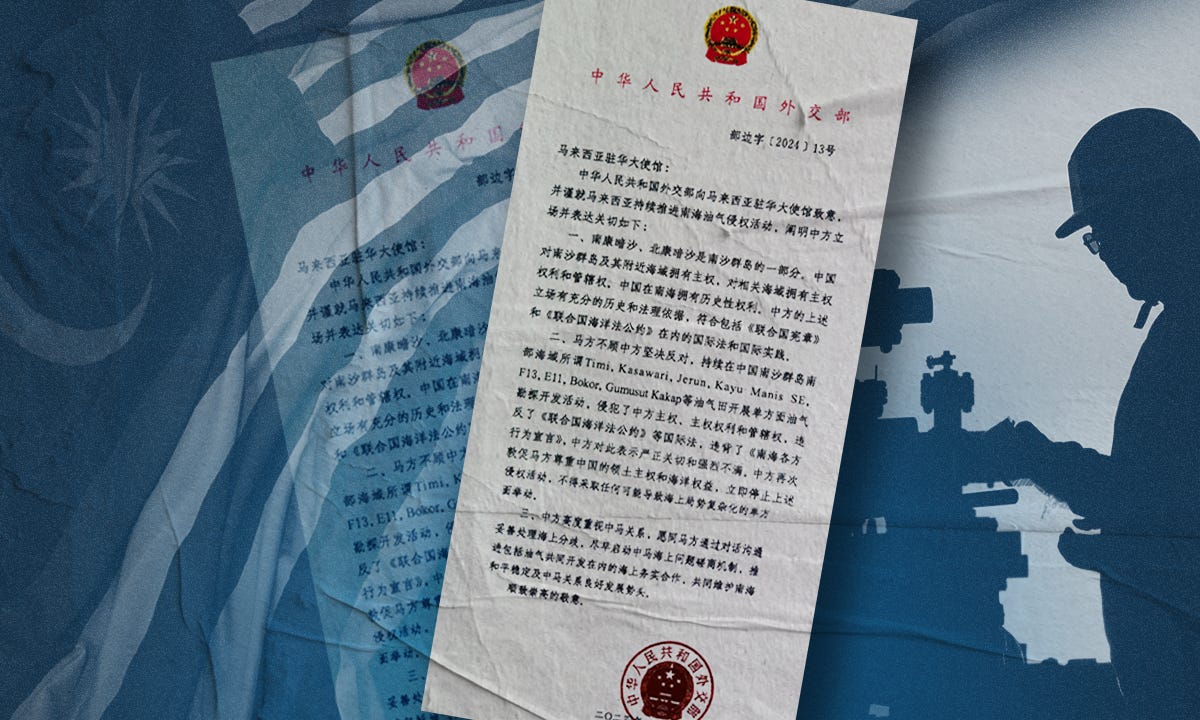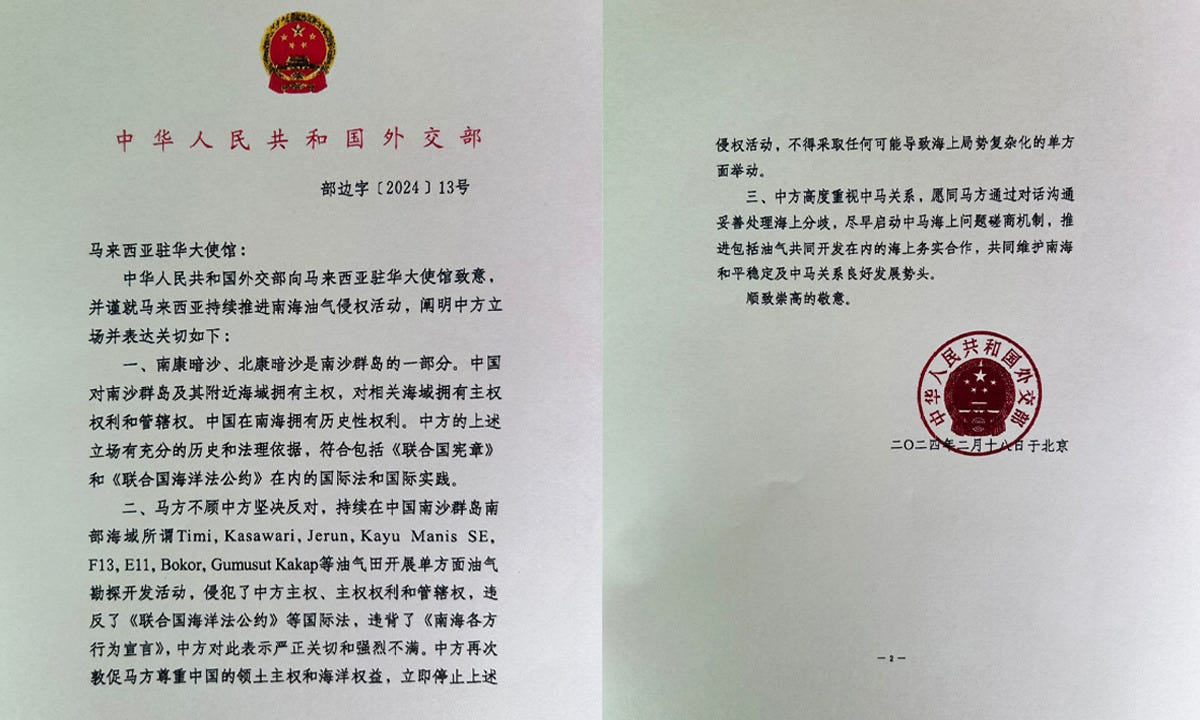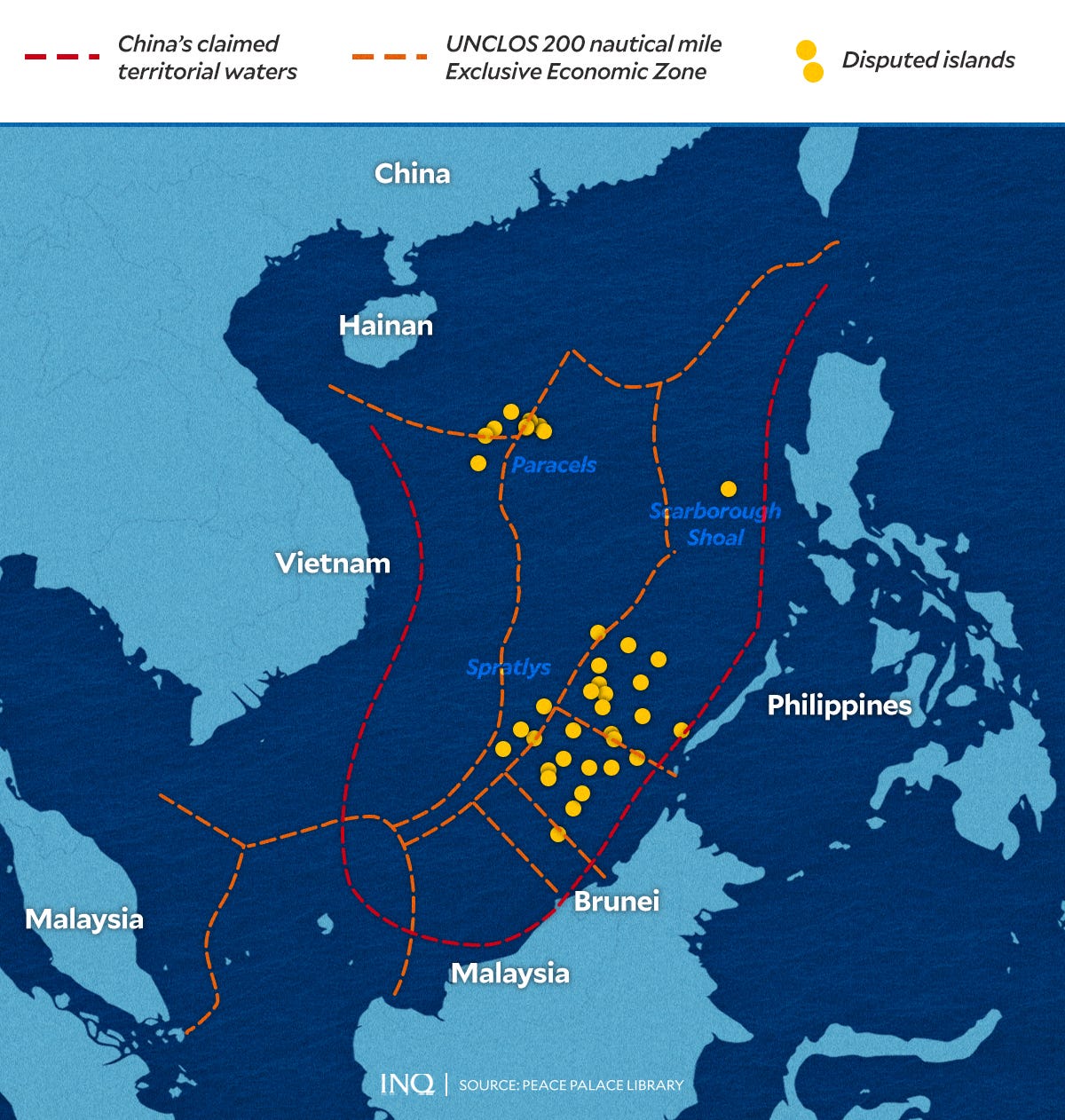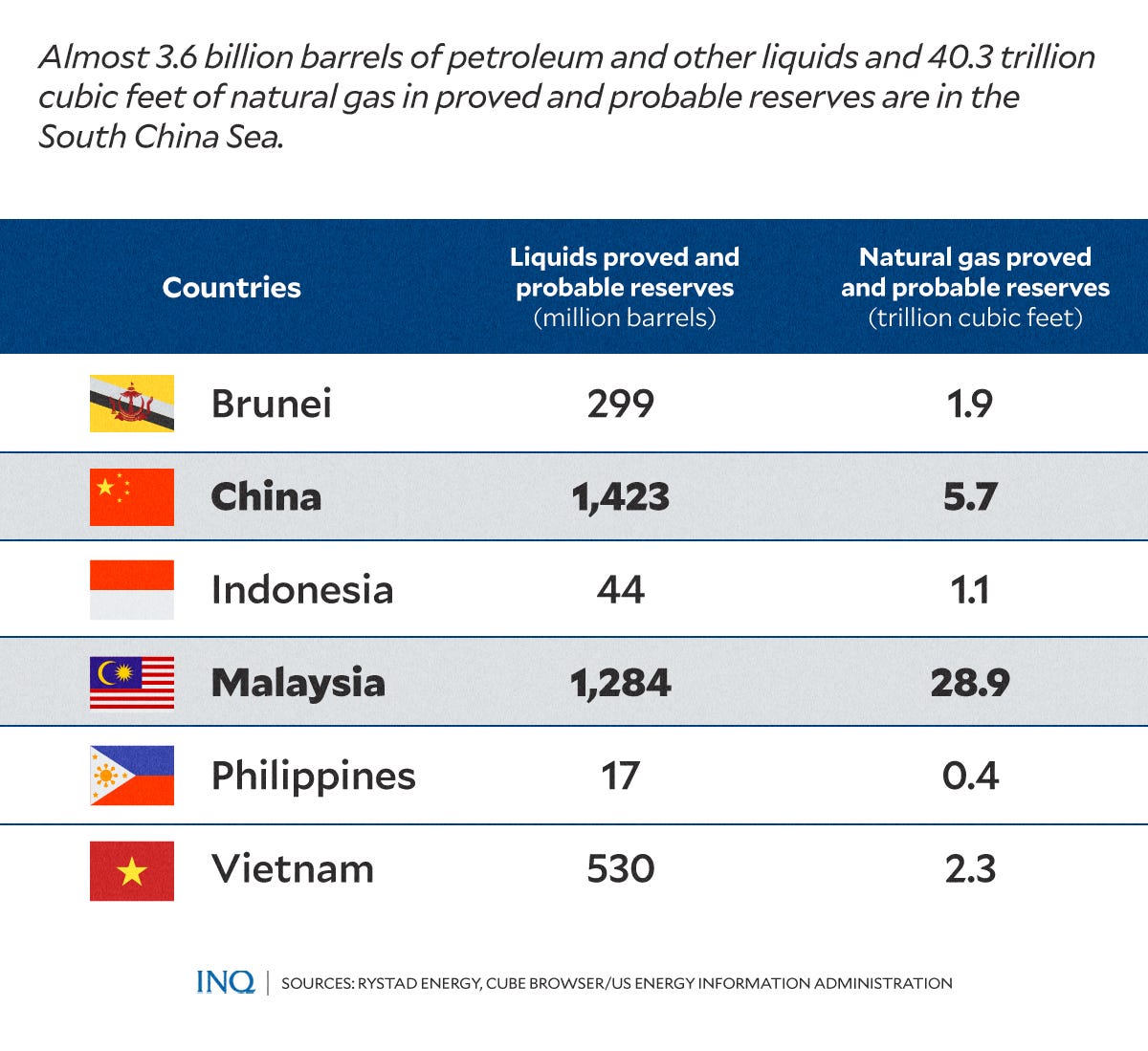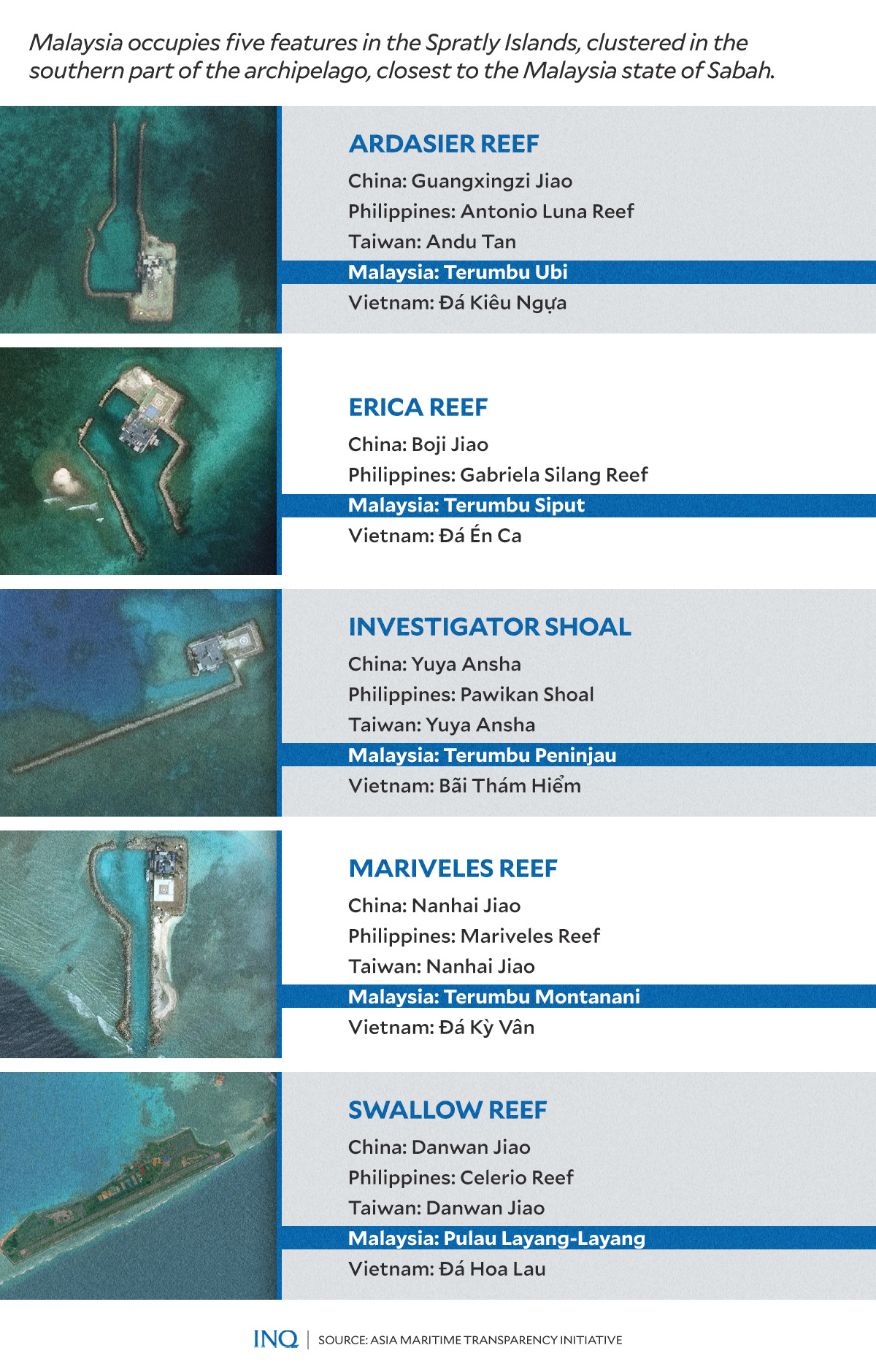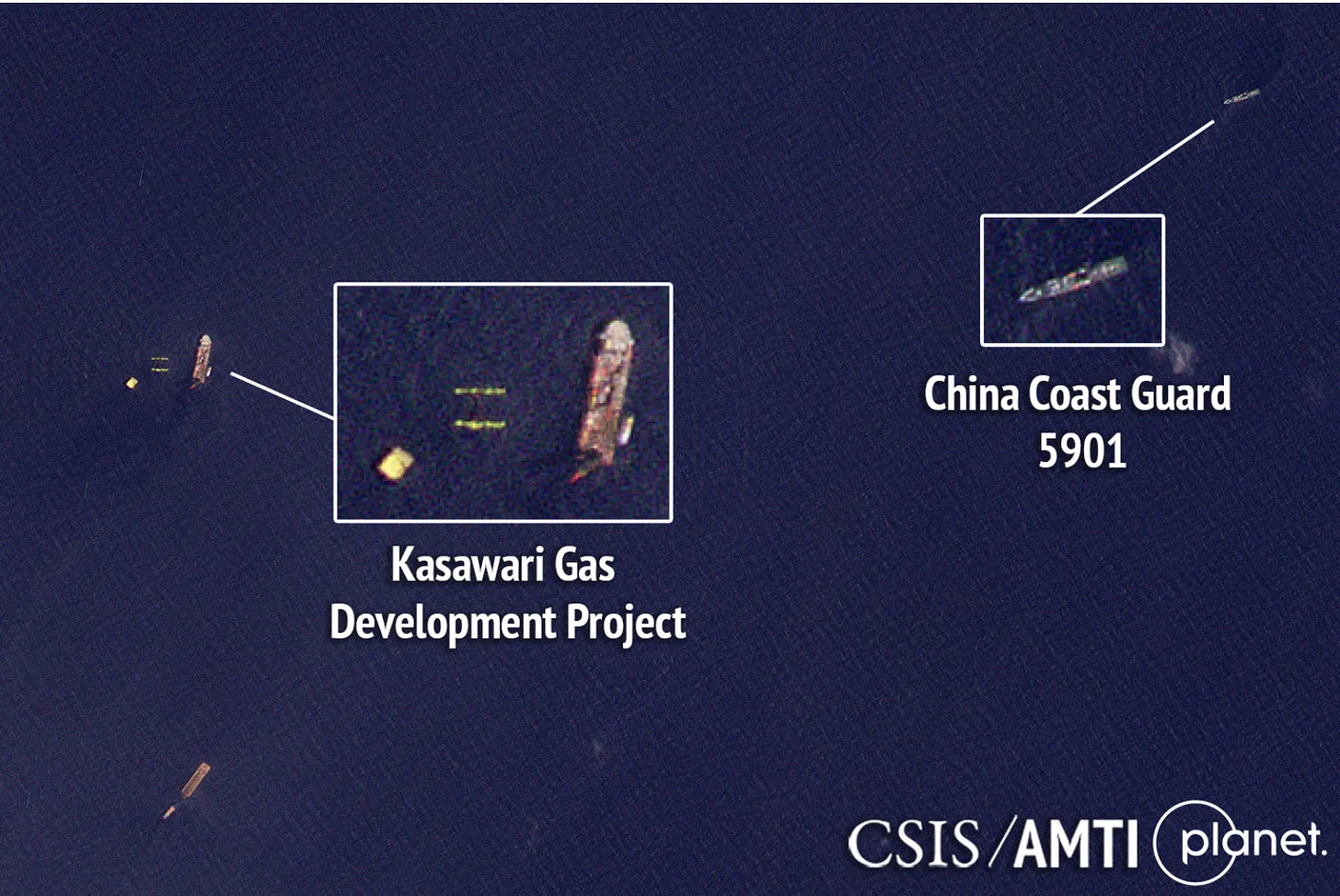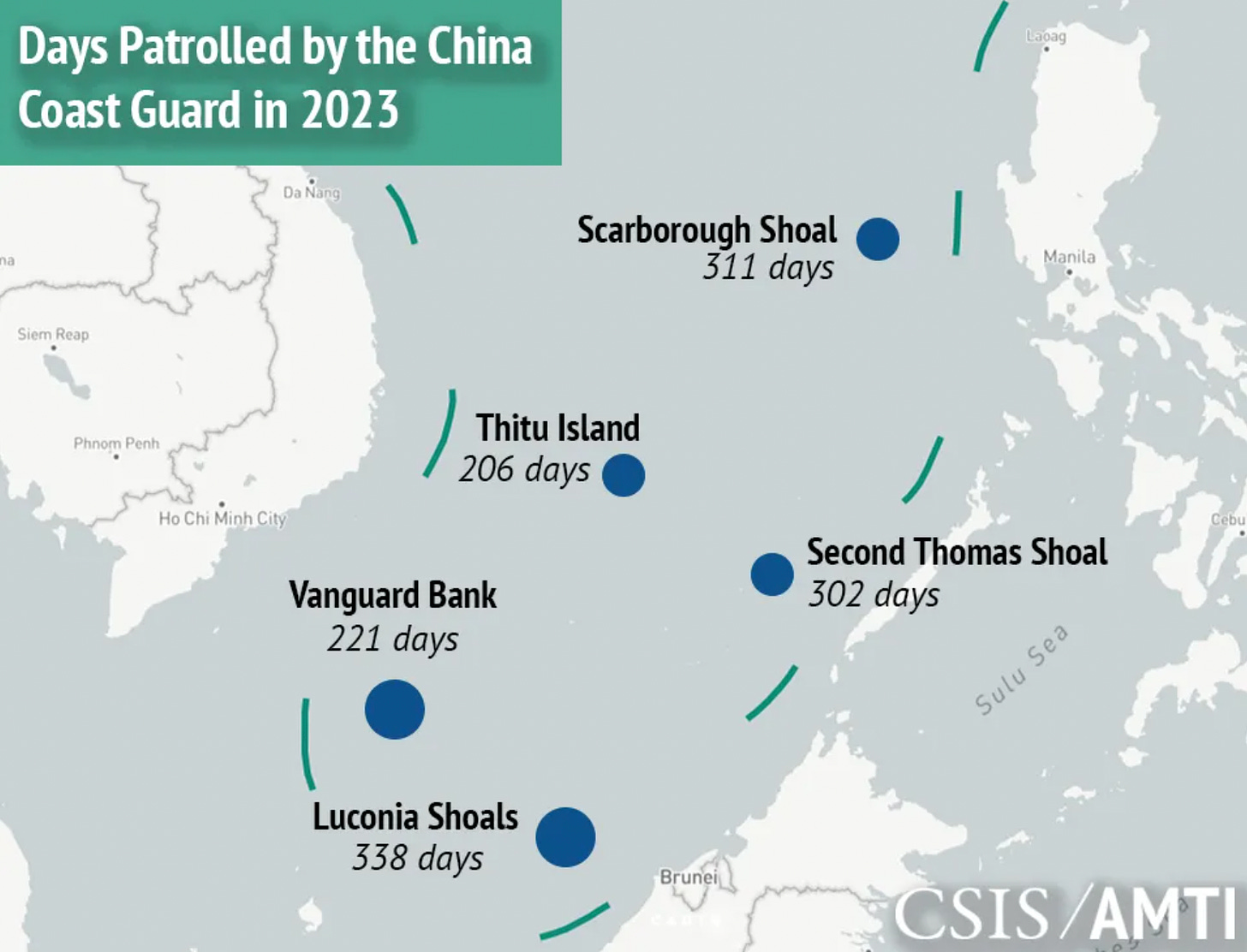Comment: This well researched article shows the challenge ahead for the China-Malaysia relationship. It’s detail justifies posting this article in full, given the graphics and commentary. This must be read with the consideration that Malaysian prime minister recently said China is a “true friend”, not to be feared. This issue could also bring complications in the MA63 discussions over sea sovereignty issues between Sabah, Sarawak and Putra Jaya.
WRITTEN BY: Kurt Dela Peña
MANILA, Philippines—China’s Hainan Island is almost 750 miles away from Spratlys in the South China Sea, where Malaysia is exploring oil and gas reserves in areas within its exclusive economic zone (EEZ).
But in a document from China’s Ministry of Foreign Affairs, Beijing pointed out that Kuala Lumpur’s actions “infringe” on China’s sovereignty in areas covered by its illegal nine, now 10-dash line.
China’s two-page document addressed to the Malaysian Embassy in Beijing, insisting that Kuala Lumpur’s actions in the Spratlys “infringe” on China’s “sovereignty.” CONTRIBUTED PHOTO
The two-page communication, addressed to the Malaysian Embassy in China, stressed that “Nankang Ansha” and “Beikang Ansha” are both part of “Nansha Qundao”, or Spratly Islands, where six countries have overlapping claims:
Brunei
China
Malaysia
Philippines
Taiwan
Vietnam
“Nankang Ansha” and “Beikang Ansha” are collectively referred to as “Raja Jarum” in Malaysia, where oil and gas exploration projects have been persistent to reflect Kuala Lumpur’s exercise of sovereignty over the area.
The reef, likewise called Luconia Shoals, is located less than 100 miles off the coast of the state of Sarawak in Malaysian Borneo, and over 1,200 miles away from China’s Hainan Island.
GRAPHIC by Ed Lustan
But China was insistent, saying that it has sovereignty over the Spratlys while pointing out that it has “historical right” over most, or 90 percent of the South China Sea.
As stated in the document, which was obtained by INQUIRER.net from a Malaysian journalist who requested anonymity, China expressed “serious concern” and “strong dissatisfaction” over Malaysia’s oil and gas exploration projects.
“The Chinese side, once again, urges the Malaysian side to genuinely respect the territorial sovereignty and maritime interests of China [and] immediately stop the above mentioned activity,” China’s Ministry of Foreign Affairs said.
As Beijing stressed, its stance has historical and legal basis, pointing out that “no unilateral action that may complicate the maritime situation shall be taken.”
Its nine, now 10-dash line, however, has already been declared baseless in 2016 by the Permanent Court of Arbitration, which decided the case filed by the Philippines against China.
Rich in reserves
Since 1963, Malaysia has exercised sovereignty over Luconia Shoals, and in 1974, the government incorporated the state-owned energy company Petronas and vested in it the rights to explore and produce oil and gas.
As pointed out by the US Energy Information Administration, almost 3.6 billion barrels of oil and 40.3 trillion cubic feet of natural gas in proven and probable reserves are in the South China Sea.
GRAPHIC by Ed Lustan
According to data from Rystad Energy, most of these resources are in the waters of China (1.4 billion barrels of oil and 5.7 trillion cubic feet of natural gas) and Malaysia (1.3 billion barrels of oil and 29 trillion cubic feet of natural gas).
The Malaysian Investment Development Authority said that the thriving oil and gas industry in Malaysia is a vital part of its economy, contributing about 20 percent to the GDP, or gross domestic product.
As stated by the Yusof Ishak Institute, the sector “has been harnessed very effectively for the country’s long-term economic development” through its contribution to state coffers and promotion of domestic entrepreneurship.
However, in the communication sent to Kuala Lumpur, Beijing insisted that oil and gas exploration in areas that include Timi, Kasawari, Jerun, Kayu Manis, SE, F13, E11, Bokor, and Gumusut Kakap are against its sovereignty.
Intimidation
Beijing said that considering China-Malaysia relations, “it wishes to properly deal with maritime divergence through dialogue and communication” with Kuala Lumpur.
GRAPHIC by Ed Lustan
“[It wishes to] jointly maintain a steady situation of the South China Sea and the momentum of a healthy development of China-Malaysia relations,” Beijing said.
Last year, according to a report by Al Jazeera, Chinese officials questioned Kuala Lumpur’s oil and gas exploration projects in the South China Sea when Malaysian Prime Minister Anwar Ibrahim visited Beijing.
As pointed out in the report, the exchange highlighted Beijing’s intensified bid to pressure Kuala Lumpur to stop exploiting energy resources, especially in waters off Sarawak.
Collin Koh, a research fellow at the Institute of Defence and Strategic Studies, told Al Jazeera that given that it was Anwar’s first visit to Beijing, China would have found it opportune to try to convince Malaysia to cease its energy work.
CCG presence
The Asia Maritime Transparency Initiative (AMTI) said last year that Malaysia’s gas initiative in Kasawari, which lies 25 nautical miles to the southeast of Luconia Shoals, has been “no stranger” to attention from the China Coast Guard (CCG).
The world’s largest coast guard vessel, the 12,000-ton China Coast Guard 5901 seen close to Malaysia Kasawari Gas Development Project. IMAGE COURTESY OF CSIS/AMTI
CCG 5305: Jan. 1 to Jan. 12; Jan. 16 to Feb. 17
CCG 5901: Feb. 18 to March 3
CCG 5402: March 31 to May 9; June 15 to July 24; Sept. 4 to Sept. 18; Sept. 17 to Sept. 26; Oct. 21 to Nov. 28
CCG 5302: Feb. 24 to March 14; May 9 to June 16; July 24 to Sept. 4; Sept. 7 to Sept. 14
CCG 5202: June 20 to July 10; July 15 to Aug. 8
CCG 5403: May 2 to May 6; Aug. 10 to Aug. 16; Nov. 29 to Dec. 31
CCG 4301: Jan. 1 to Jan. 2
CCG 5304: Nov. 7 to Nov. 9
CCG 5205: March 13 to March 30
AMTI pointed out that the vessels seen in Luconia Shoals, and even in Second Thomas and Scarborough Shoals, most often belong to the Shucha II and Zhaolai classes.
GRAPHIC by CSIS/AMTI
These vessels are largely unarmed, except for water cannons and small arms, but are much larger than the law enforcement or most navy ships of their neighbors.
“This makes them ideal for operations that might involve threatening collisions and, if necessary, shouldering other vessels to drive them away without using lethal force,” it said.
Sea ‘battle’
It was in 2012 when Malaysia discovered the gas field in Kasawari, and then oil and gas reserves in the SK 320, SK 306, and SK 410B blocks in late 2022, according to data from AMTI.
As stated in a study by Bama Andika Putra, which was published in Frontiers, “throughout this process, China has attempted to aggravate Malaysian policymakers by conducting assertive maneuvers […] in the Luconia Shoals.”
However, Putra pointed out that “Malaysia has responded passively to these evolving events, ensuring that the Royal Malaysian Navy and the Malaysian Maritime Enforcement Agency do not react coercively to those provocations.”
Since 2013, China has maintained a near-constant CCG presence in Luconia Shoals.
INQUIRER.net has reached out to the Malaysian Embassy in the Philippines, but has yet to receive a response to a request for comment, especially on the document sent by Beijing to Kuala Lumpur.
But in 2018, based on a report by Radio Free Asia (RFA), when the Philippines suspended its oil and gas exploration in the South China Sea, an analyst pointed out a possible “coercion” from China.
China’s strategy
Lawyer Jay Batongbacal, director of the University of the Philippines’ Institute for Maritime Affairs and Law of the Sea, told RFA that China has been pressuring Manila to either accept its proposal or stop drilling.
“Through diplomacy and the actions of the CCG, Beijing has been trying to coerce Manila to stop conducting seabed exploration and research activities in the West Philippine Sea until the latter submits to China’s conditions for joint development,” he said.
As AMTI pointed out, what really sets apart the Chinese vessels in Luconia Shoals is that “it appears they want to be seen,” explaining that CCG vessels elsewhere in the South China Sea often do not broadcast AIS, or automatic identification system.
But those in Luconia Shoals “appear to broadcast far more frequently.”
This pattern, AMTI said, “highlights an important CCG objective in the South China Sea–to create a routine, highly visible Chinese presence at key sites over which Beijing claims sovereignty but does not have any permanent facilities.
Malaysia occupies a total of five features in the Spratly Islands. They are clustered in the southern part of the archipelago, closest to the Malaysian state of Sabah.
Originally published in the Inquirer.net 29th August 2024
Subscribe Below:



